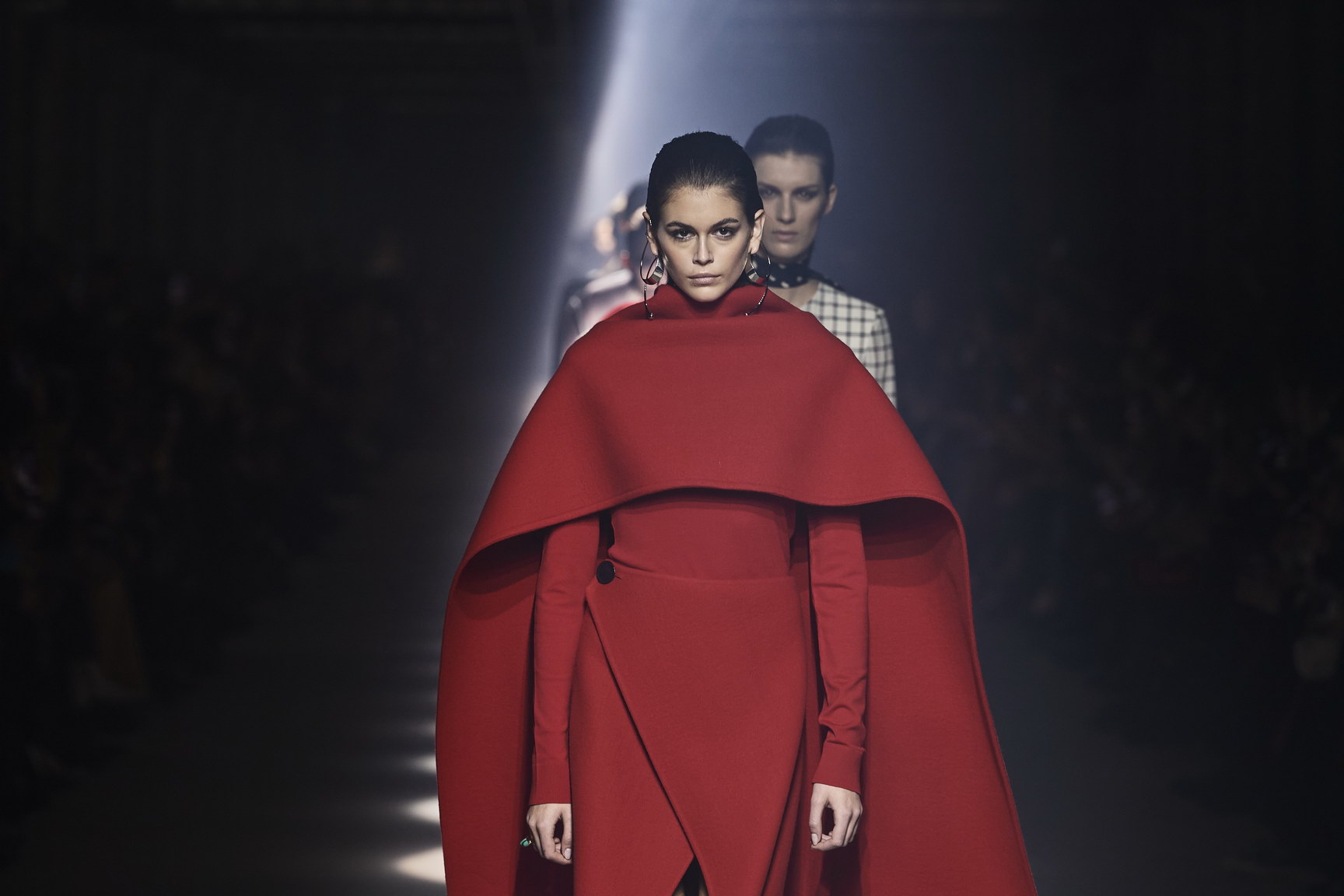Fran Summers opened the Givenchy show in a back-grazing, face-obscuring floppy fedora hat, worn with a black polo neck sweater and a pendant that could well ward off evil spirits. It struck a chord in a week of coronavirus hysteria, offering up a chic don’t-kiss-or-hug-me protectiveness that a paper face mask simply can’t muster — much to the dismay of fashion editors trading them at the entrance to shows. Is fashion rallying against COVID-19 on the catwalk? Probably not intentionally, but Clare Waight Keller’s latest collection had plenty for stylish hypochondriacs nonetheless: wide-shouldered wool coats (perfect for establishing personal space), leather opera gloves (ideal for hands-off contact) and sweeping blanket shawls (nothing like hiding behind cashmere). These are clothes for women to layer up against the world, marking out their boundaries and self-imposing a sartorial quarantine — even if they’re partial to silver sequinned fishtail skirt, or a faux-mink cloak.
The actual inspiration for Clare’s collection was La Nouvelle Vague heroines such as Anouk Aimée and Anna Karina, the latter of whom died last year. “It took extremely beautiful French women and put them in this raw brutalist environments,” Clare pointed out. Hence the harsh white and red lighting at the show, which took place in a concrete hallway of the Hippodrome de Longchamp racecourse. The hallmarks of silver screen glamour came via sharply sculpted capes and coats (as close to brutalist as a couture house gets) and the archive of Hubert de Givenchy and his penchant for flights of feathers (which came fringed with raffia this season).
Clare was also looking at artworks by Helena Almeida and Ketty La Rocca, who used themselves as canvases as part of the performance art movement in the 60s and early 70s. La Rocca would photograph herself draped in scarves and clothes with flashes of flesh revealed — something that Clare translated into an array of graphic jewel-tone dresses that had a collage-like drapery flowing around the body and deep V-necks. “It was about the idea of wrapping and being very covered among all the exposure and rawness,” she added. That couldn’t be more prescient notion for right now.
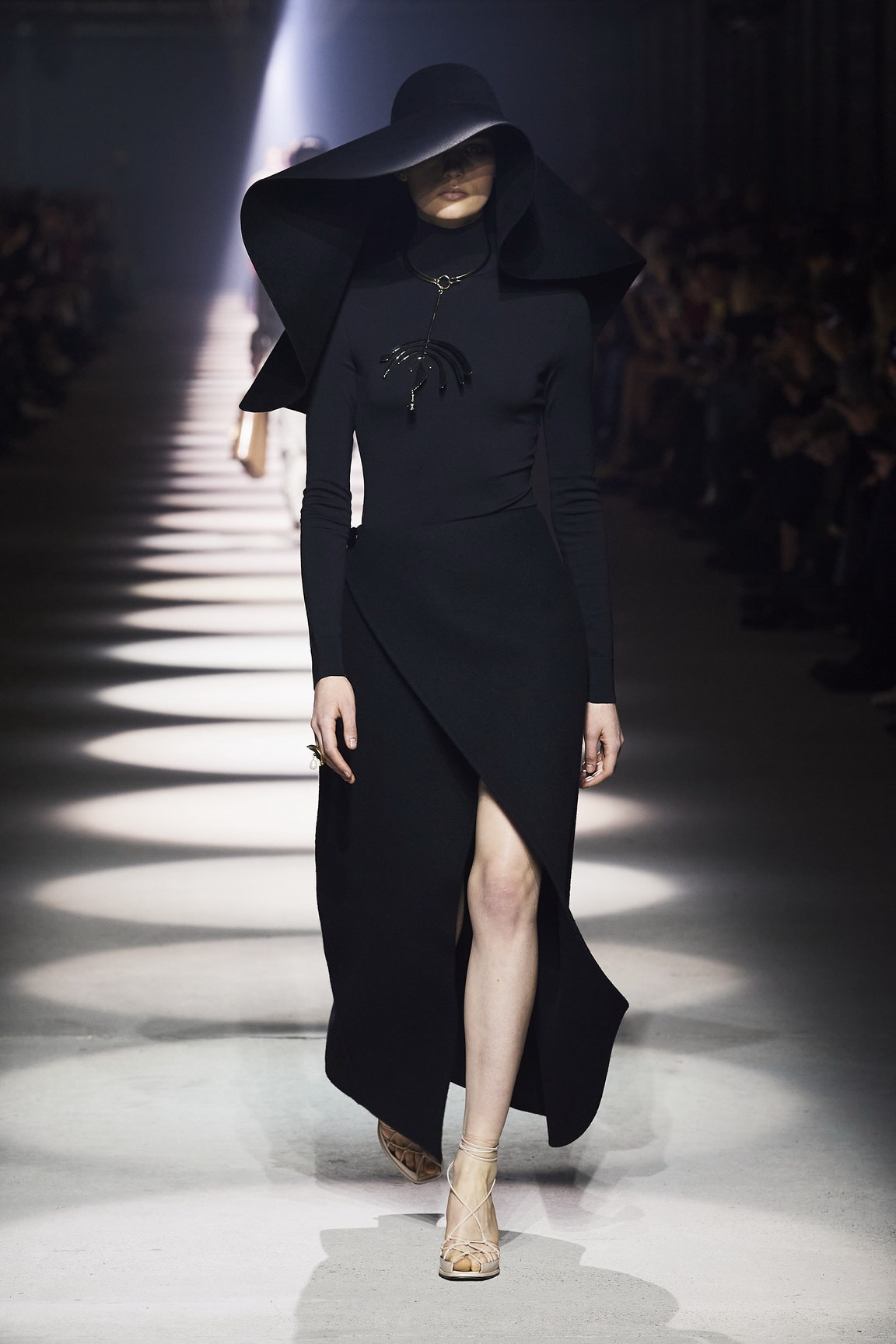
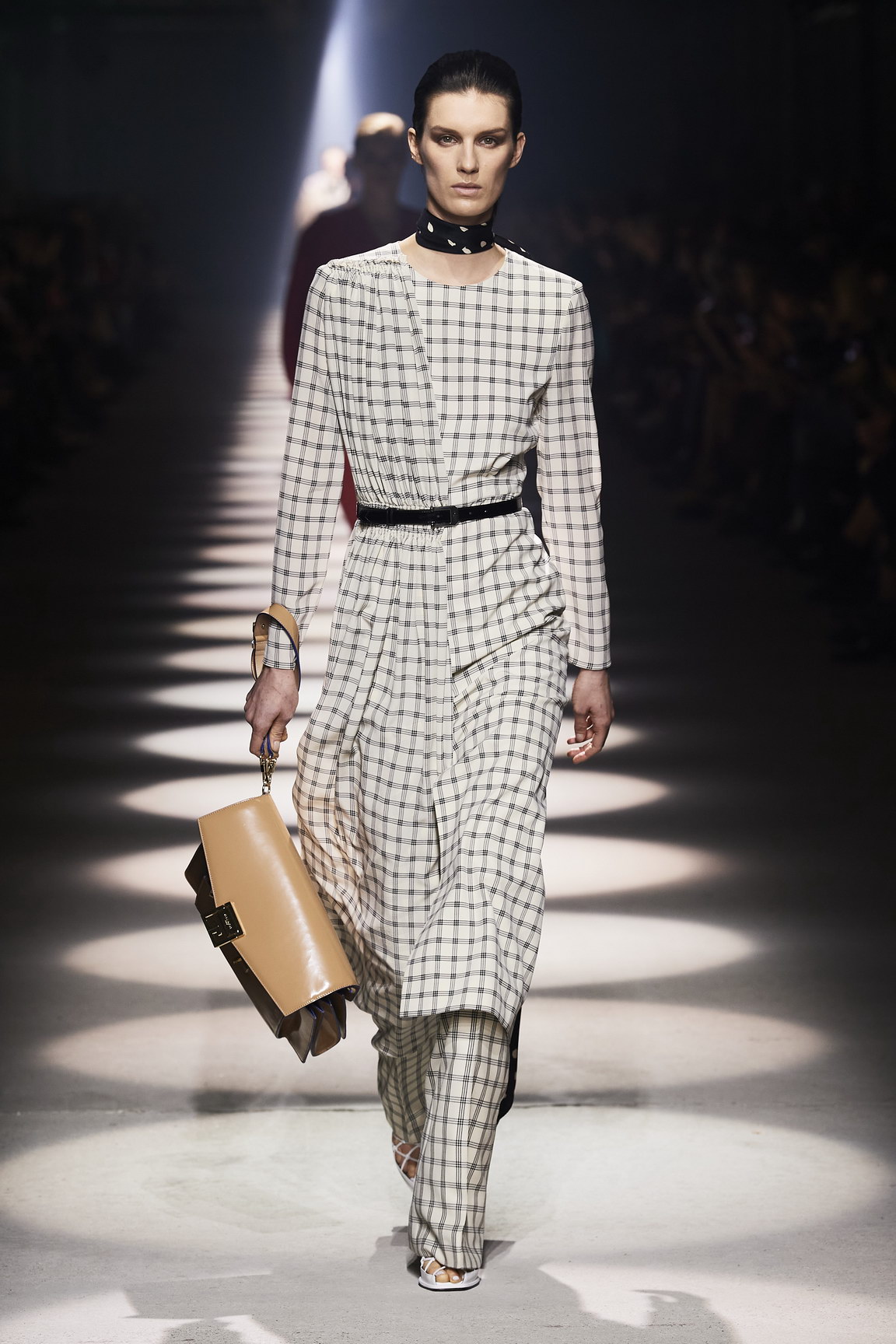
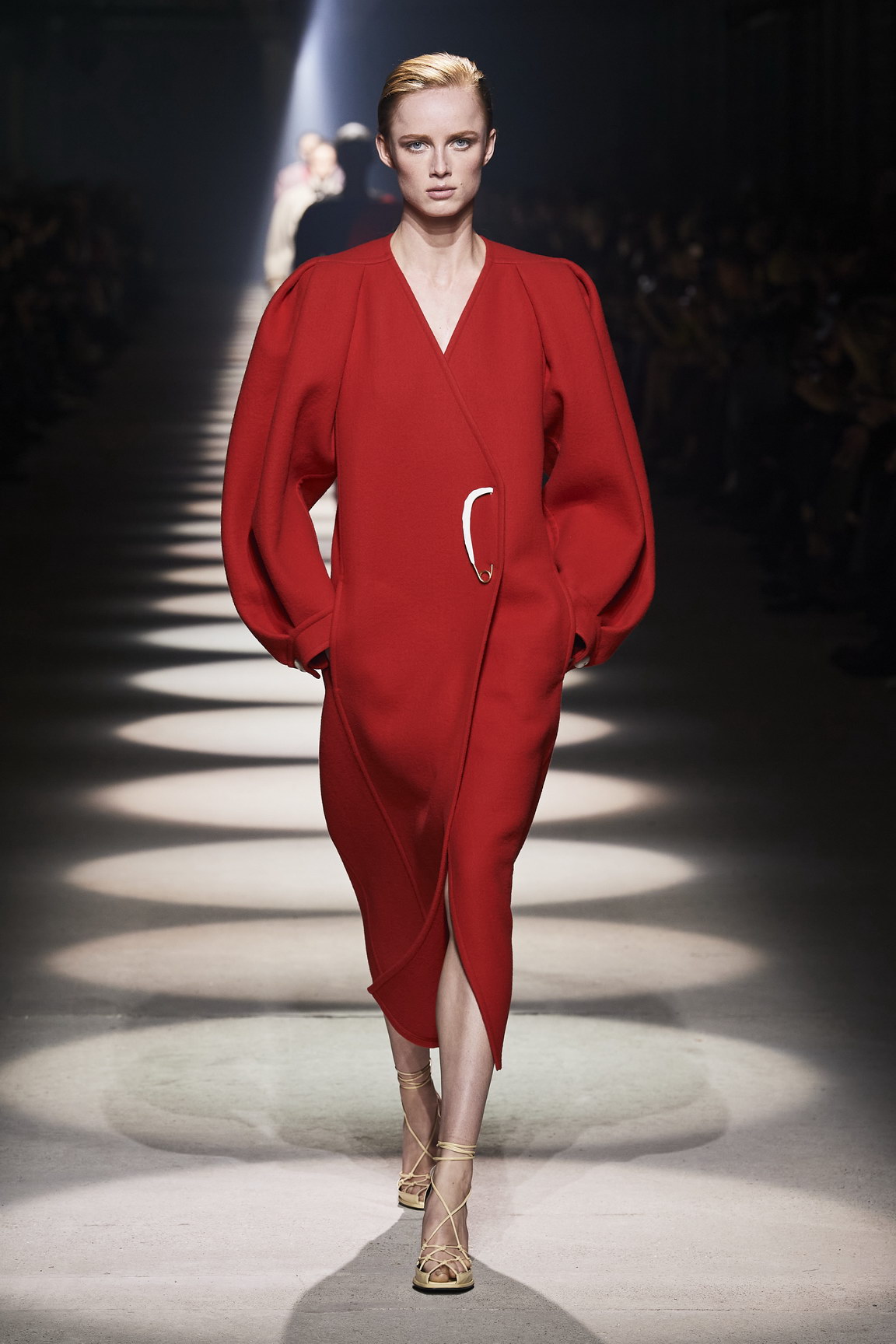
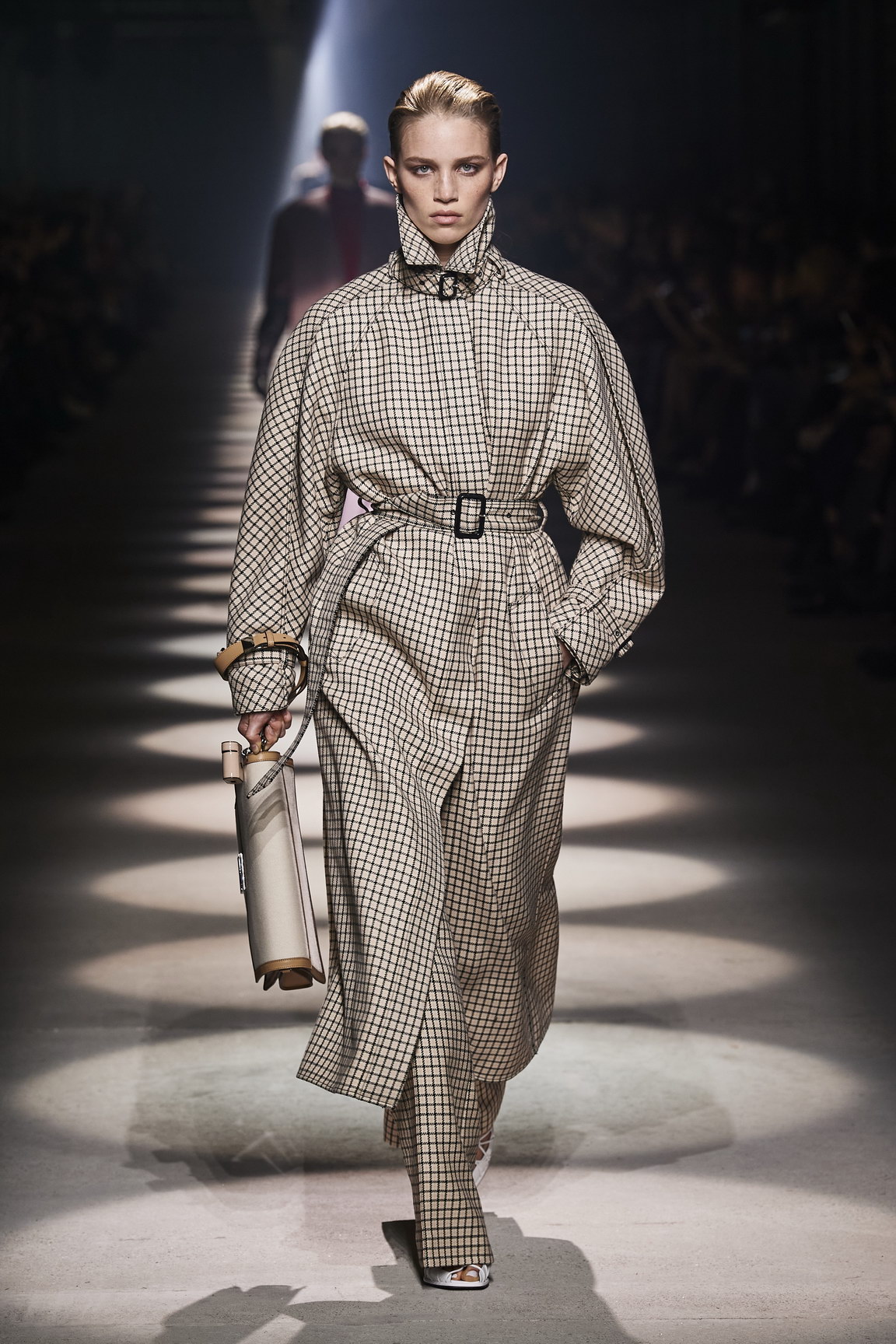
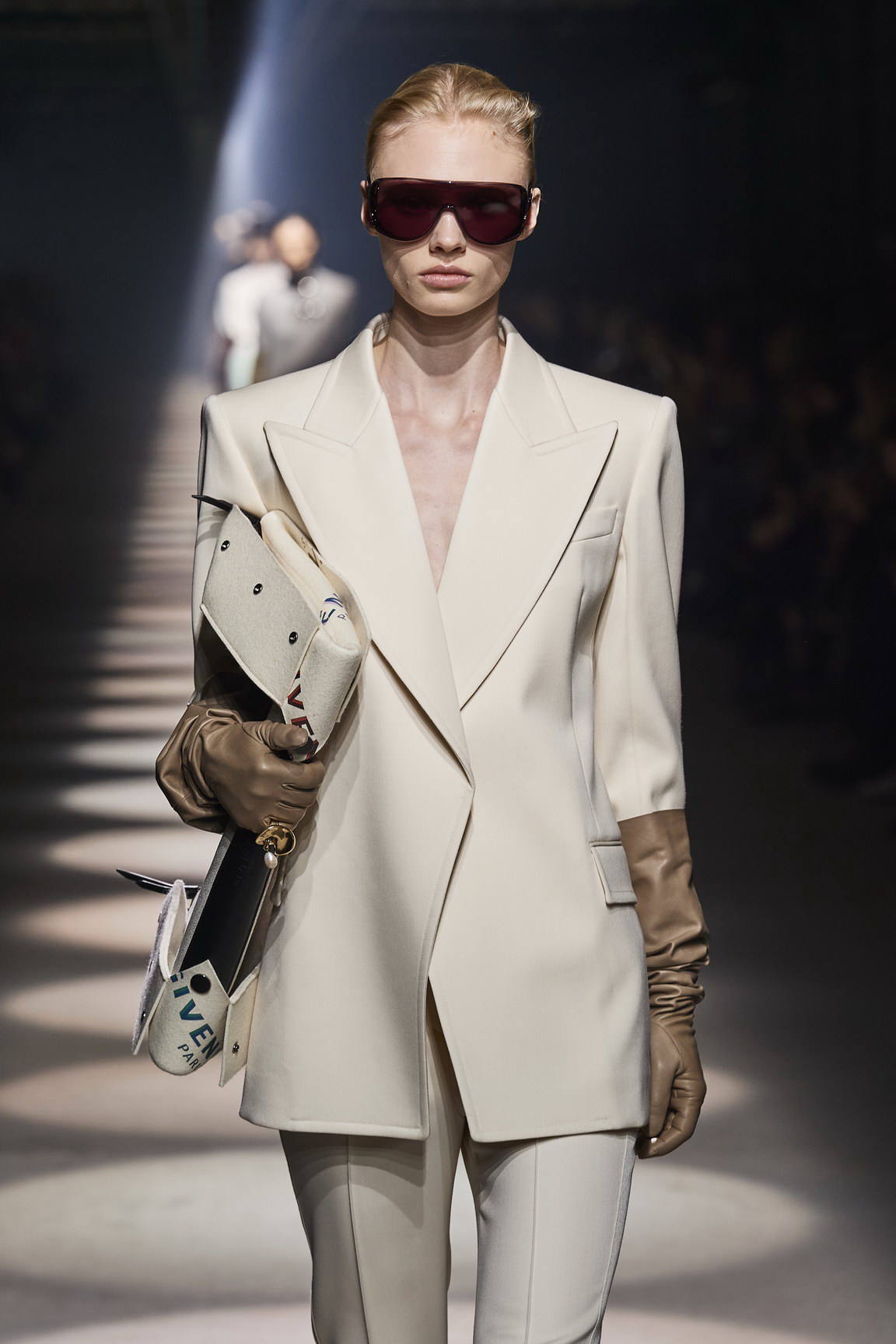

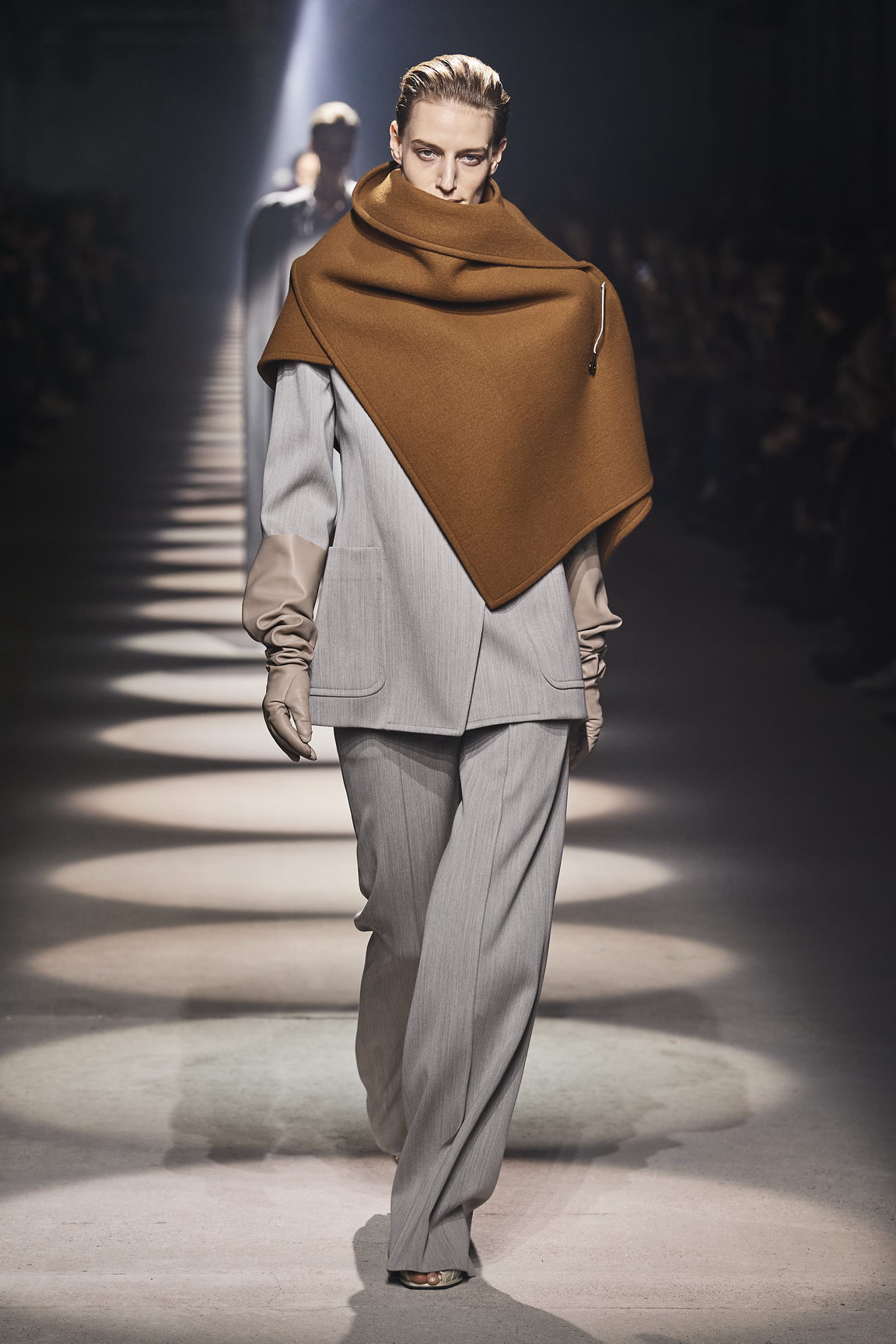
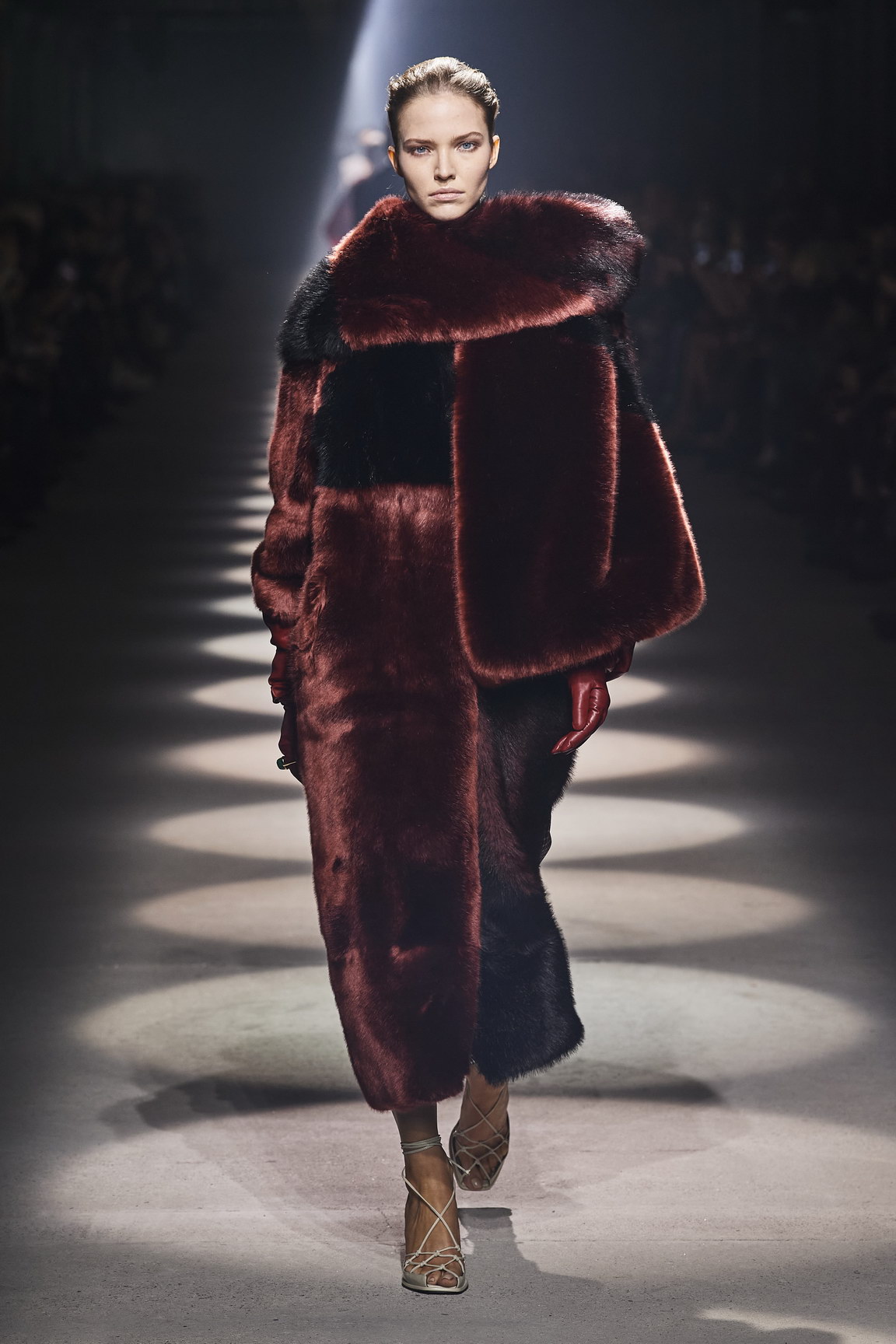
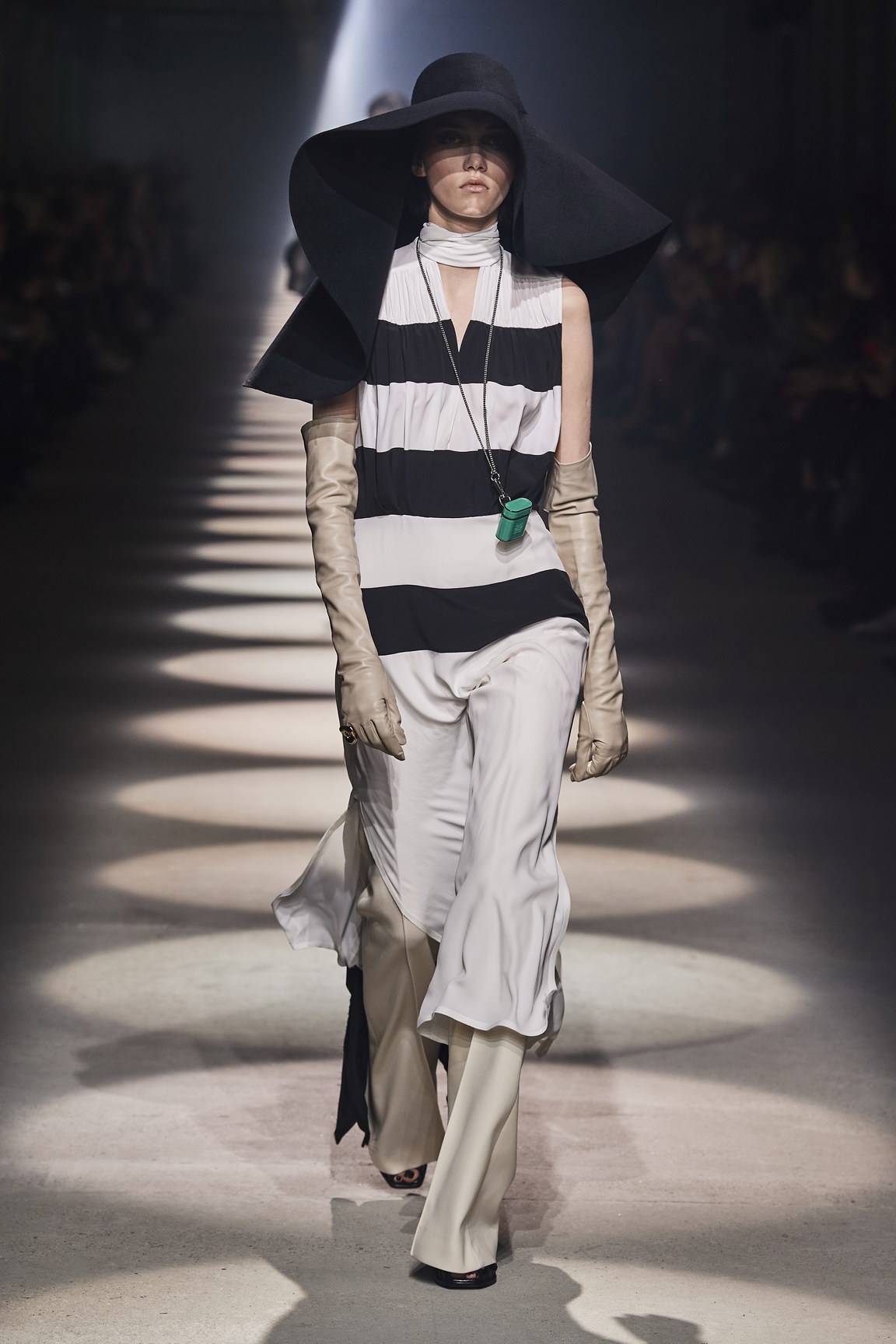



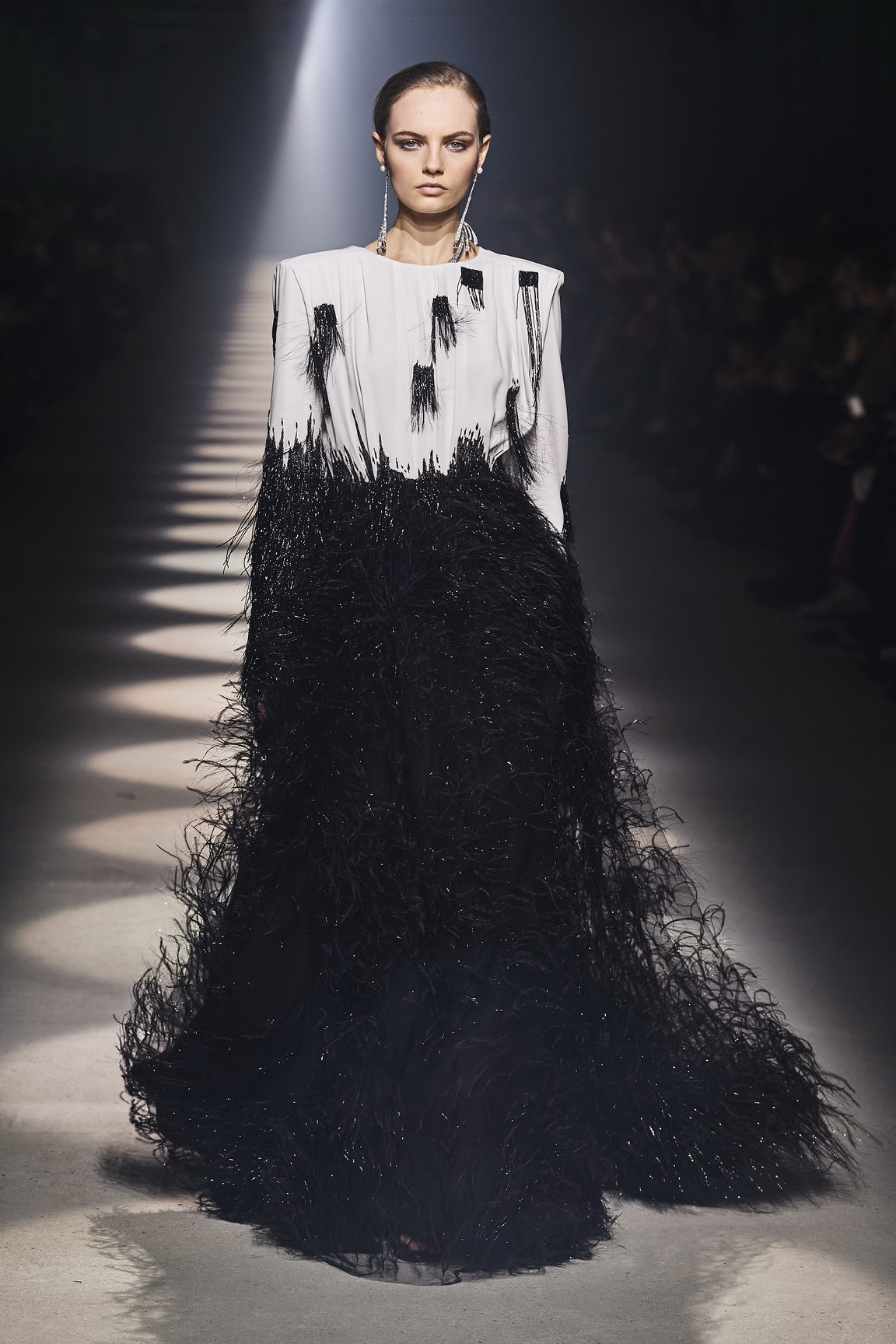
Credits
Photography Mitchell Sams
